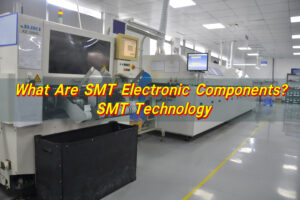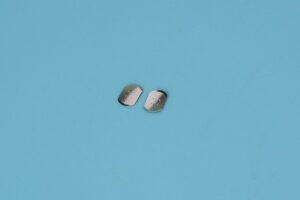Metal dome series refers to a group of tactile domes categorized by shape, structure, size, and actuation force. These domes are the core of many switch designs, responsible for the tactile “click” when pressed. A series dome typically shares similar mechanical properties and is designed for specific layout patterns, such as 4-leg, 3-leg, round, or triangle domes.
Each metal dome series serves a distinct purpose in electronics—balancing feel, durability, and space. Choosing the right series ensures optimal feedback, consistent performance, and long product life.
How to choose a metal dome series?
Each series dome is defined by specific dimensions, shapes, actuation forces, rebound characteristics, and tactile feel. These differences directly influence how the end-user interacts with your product.
To make the right choice, ask yourself:
- What’s the main use of the switch?
- Do you need strong tactile feedback?
- How much space is available in your housing?
- What’s your required actuation force?
These answers help you narrow down the dome types that make the most sense for your application. For instance, consumer electronics often demand low-force domes, while industrial controls may require more durable, high-force tactile feedback.
Remember, no dome works in isolation. Each series is matched with the right overlay, PCB layout, and even dome array placement. That’s why choosing the correct dome series early in your design phase will save time, avoid costly mistakes, and improve final product satisfaction.
Which dome series suits your switch design?
Different metal dome series offer unique performance traits. Most manufacturers organize them into series such as:
- 4-leg domes: Balanced and stable. Often used in dome arrays.
- 3-leg domes: Space-saving with good tactile feel.
- Round domes: Symmetrical response, easy to center.
- Triangle domes: Compact layout, decent feedback.
- Cross domes: Special designs for unique circuits.
Each dome series brings a different tactile feel, travel distance, and force range. Let’s say you’re building a handheld device. You may need soft tactile feedback that won’t fatigue the user’s fingers. A 4-leg metal dome series with 200g force might be perfect.
But in a rugged medical device where safety matters, a higher-force dome type—like a 4-leg 500g series—could offer better precision and confidence in every press.
What are the common dome types?
Here are the most common:
- Four-leg domes: The most widely used. Highly stable and excellent for uniform actuation. They offer long life, often exceeding one million presses.
- Three-leg domes: Slightly smaller footprint but still effective. Best when board space is limited.
- Round domes: Perfectly centered, great for evenly distributed pressure.
- Triangle domes: Fit tight areas. Used in miniaturized designs.
- Custom domes: Tailored to your needs—shape, force, feedback.
Each metal dome type serves a purpose. While round domes are great for balanced pressure, 4-leg domes dominate in performance and lifespan. Triangle domes work well in dense layouts where space optimization is critical.
How do metal dome types affect performance?
Small difference in dome height, thickness, or force can affect how it feels, how long it lasts, and how your user reacts.
Here’s how metal dome types influence performance:
- Force Level: Each dome has a set actuation force, ranging from 100g to over 600g. Higher force domes resist accidental presses. Lower force domes offer a light-touch experience.
- Travel Distance: Determines the distance the dome moves before registering an input. Short travel gives quick response. Longer travel offers pronounced feedback.
- Rebound Speed: Some domes return to their original shape faster than others. A quick rebound means faster input cycles.
- Click Sound: Some series offer a pronounced click. Others are quiet. It all depends on user preference.
Mismatch between the dome type and application results in disappointment. If the dome is too soft, it may feel unresponsive. If too firm, it can cause fatigue.
What’s the difference in metal dome types?
Even two domes with the same diameter may feel entirely different depending on the leg shape, metal material, and dome profile.
Here’s what varies:
- Shape: Round vs. legged domes. Round domes actuate centrally, while 4-leg domes provide lateral stability.
- Material: Stainless steel is standard. Some suppliers offer enhanced materials for ultra-long lifespan or corrosion resistance.
- Surface Finish: Gold-plated domes offer better conductivity and anti-oxidation performance.
- Force Profile: The curve of force versus travel differs across domes. Some have a sharp snap; others are smoother.
- Durability: Some dome types last 500,000 cycles. Others over 5 million.
Which dome types offer better tactile feedback?
Tactile feedback is king in dome selection. So which dome types deliver?
- 4-leg domes: Best overall tactile feedback. The click is crisp, the return is fast, and it feels reliable.
- 3-leg domes: Good feel, less space. Somewhat softer response.
- Round domes: Moderate tactile feel. Smooth and quiet, best for silent interfaces.
- High-dome variants: More travel and feedback, great for mechanical-like sensation.
- Embossed domes: Specialized tactile designs for extra response.
Because the right tactile dome can make users smile, tap more, and trust your product faster.
What to check when selecting dome types?
Before locking in a dome type, always check:
- Force Tolerance: Ensure it matches your product use.
- Life Cycle Test: Minimum 1 million presses?
- Contact Resistance: Should stay low—under 100 milliohms is ideal.
- Actuation Height: Crucial for PCB layout and overlay match.
- Feedback Strength: Is it too soft or too loud for your use?
- Environmental Resistance: Need water-resistance? Dust-proofing?
Also, evaluate series dome consistency. Are all domes in a series within tolerance? A reputable manufacturer, like Best Technology, guarantees that. We measure within ±0.05mm accuracy across each dome series, tight tolerances that boost reliability and reduce defects.
Can you customize a metal dome series?
Absolutely. If standard domes don’t fit your goals, we can design one that does. Here’s what you can customize:
- Dome diameter and shape
- Actuation force (light to heavy)
- Surface treatment (gold, nickel, or plain)
- Leg design for specific pads or traces
- Special embossing or texture
- Paired with Light Guide Film (LGF) for backlit interfaces
Custom metal dome series is ideal when you need branding consistency, unique feedback, or a precise function not offered off the shelf.
Our engineers at Best Technology are here to co-develop the exact dome you need, from prototype to mass production.
Conclusion:
The metal dome series plays a vital role in switch performance, offering various dome types tailored to different design needs. From 4-leg domes to round and triangle shapes, each dome type delivers unique tactile feedback and reliability. Choosing the right series dome depends on factors like actuation force, space, feedback, and lifespan.
Best Technology is ready to support you with over 18 years of dome manufacturing expertise. We offer complete customization, rapid sampling, and reliable quality control across every metal dome series we produce.
Need help selecting the right dome series for your switch? Contact our expert team at sales@metal-domes.com







